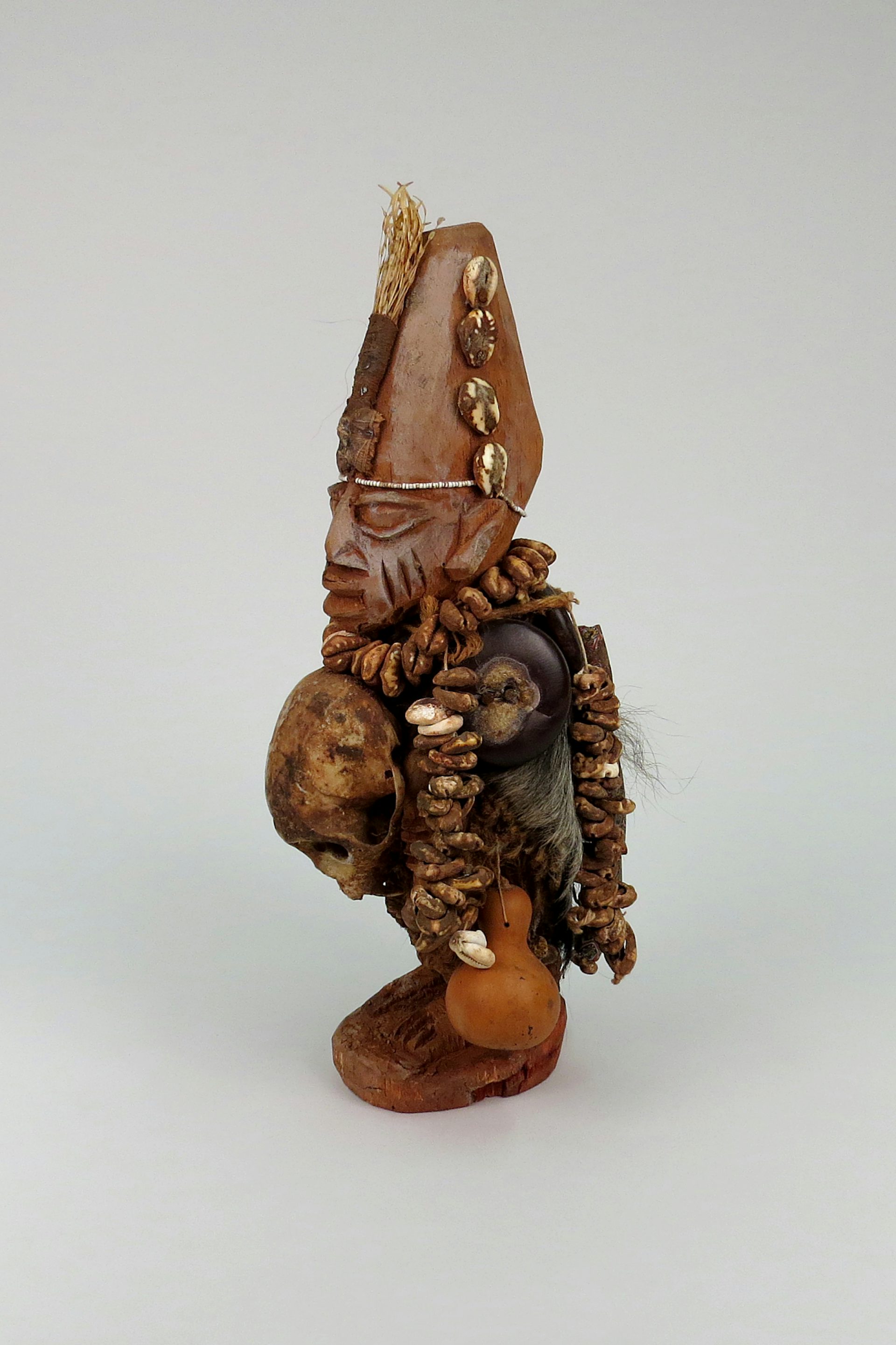Obaluaiye

A carved wooden figure of Shopona, mounted on a horse. Yoruba artist (n.d)
Museum of Archaeology and Anthropology CC BY-NC-SA 2.0Overview
Obaluaiye is the oriṣa (or god) of diseases and epidemics, especially smallpox. He has the ability to decimate entire cities with disease, though he can also cure illnesses or rid a city of pestilence.
Obaluaiye demands unwavering respect and worship in his shrines, which are typically located on the outskirts of towns. These shrines are important in preventing outbreaks of epidemics. Whoever offends Obaluaiye can expect to earn his wrath, which usually comes in the form of a plague (especially smallpox).
Obaluaiye is a god with many names, including Babalú-Ayé, Babaluaiye, Obaluwayé, and, most commonly, Sòpònno.[1] However, it is said that his “real name is too dangerous to mention.”[2]
As the god of disease, Obaluaiye is both feared and respected for his ferocity and destructive power. He is a notoriously demanding deity, requiring praise and gratitude even after he has devastated a city. In fact, one praise name for the god is Alápa-dúpé, meaning “one who kills and is thanked for it.”[3]
Pronunciation
English
Yoruba
Obaluaiye Ọbalúayé Phonetic
IPA
aw-baa-loo-ai-yey ɔ̄.bā.lú.ā.jé
Obaluaiye’s Exile

A carved wooden statue of Sopona (Shapona) by Yoruba artist, (1960’s).
Smithsonian Open AccessCopyrightIgnorant kings once banished the cult of Obaluaiye from their lands. Obaluaiye thus became an outcast, wandering from town to town. The god eventually returned to Yorubaland in disguise. Wearing a "full-body mask of straw," he sought an audience with the alaafin (the emperor).[4] Annoyed that the stranger did not bow to him, the angry alaafin demanded to know what the stranger wanted without first offering a formal greeting.
Obaluaiye, controlling his anger, replied that he wanted war with the royal family since they had offended him. The alaafin obviously did not want a war and thus refused the stranger’s request. Obaluaiye then removed his mask, revealing a “featureless face, bleached and eaten by leprosy.”[5] He took a gourd from a bundle around his waist and emptied the seeds into his left hand.
Obaluaiye scattered the seeds in the palace and gave the alaafin an ominous warning. Eleven days later, a smallpox epidemic broke out, decimating the city. The alaafin consulted a babalawo (an oracle) and learned that this outbreak was a sign of Obaluaiye’s wrath. The oracle advised him to rebuild the cult of Obaluaiye outside the city walls to appease the god and drive away the plague.